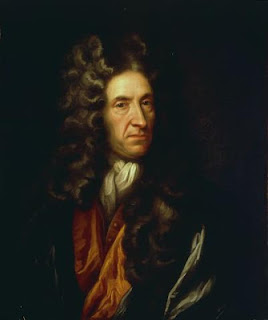 |
from Malcolm Balen, The Secret
History of the South Sea Bubble (London, 2003), 199 |
So we come back to Blacks in early modern England. Before the 18th century, how did they impact the narrative? For starters, we can note that they were there, and writers and engravers noticed that they were there. And, to the extent that is true, we need to rethink English identity, and how what they thought about themselves affects the narrative.
To give one example, Jacobite-fancier, Eveline Cruickshanks makes the following comment about the appearance of 200 Black Surinamese marching with William of Orange along with Finlandiers in bearskins up to Exeter afer landing in November 1688: "[w]e can merely guess the feelings of various sectors of the population." (The Glorious Revolution, Basingstoke, Hampshire, Macmillan, 2000, 26). By which she means (and she must mean something, as the book is too short for meaningless statements to survive), that such exotics were completely outside the ken of simple, traditional-minded Anglo-Saxons. Thus, is there any further proof needed that this was a foreign invasion, an outside force of occupation from "the Other"? Perhaps. But, if the English were used to the occasional Black boy servant, Black hair dressers, even Black sailors throughout the cities and, indeed, in smaller coastal ports, then her observation falls flat. The idea that the English would have no idea what to make of foreigners, and Black foreigners at that, would certainly be ludicrous in the late-18th century, and probably doesn't apply to the late-17th century either, and might not apply to the late-16th century.






